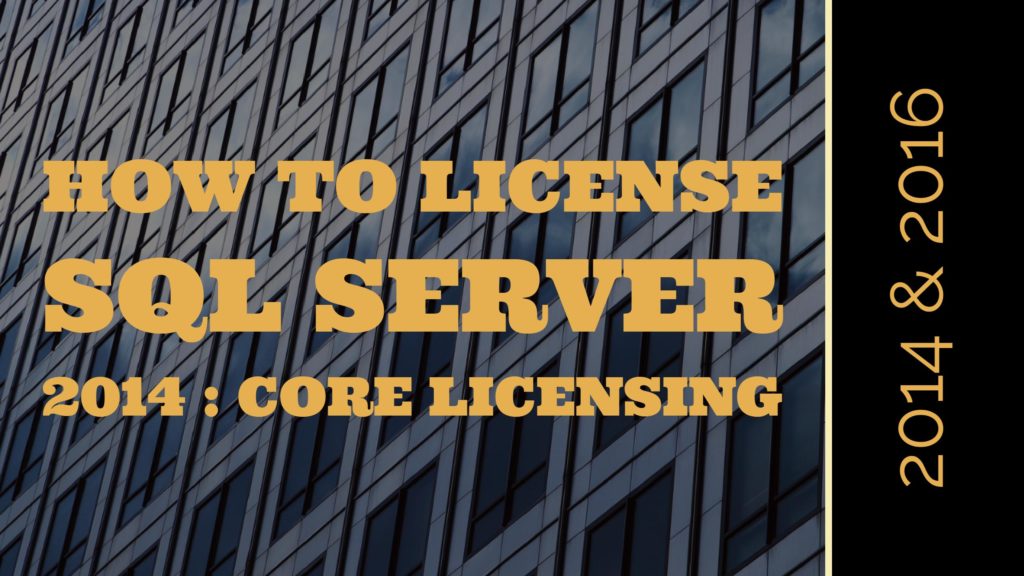Microsoft SQL Server 2014 Core Licensing method is the one that majority of the Medium to Large Enterprises would go for. It is because it gives you unlimited client connections. There is also no need for clients to purchase additional Client licenses (CALS). However, as explained in my previous post, the Server CAL model of licensing is beneficial for smaller deployments with “Fixed” limited client connections. If you are new to SQL Server Licensing, please see this post first.
SQL Server 2014 Core Licensing
Source: Microsoft Licensing Guide for SQL 2014
Now, here is when things can get a bit more complicated. Imagine the picture above, and understand the following terms which would be used to realize Core-Based licensing.
- Physical Server – The Server (Which is not a Virtual Machine) on which you plan to install SQL Server 2014.
- Physical Processor – Please refer to the picture above. Physical processors typically come from Intel & AMD. They look like this:
source: AMD.com
- Physical Core: Processors can contain Dual, Quad, Hex, Octa or more cores in each processor. It depends on the processor model or vendor.
- Hardware Threads: Logical threads introduced first with Intel Hyper-Threading Technology(HTT). AMD also sells Modules instead of Cores which adds a bit to the confusion.
You need to License all the physical cores of the Server. The exception here being Virtual Machines.
SQL Server 2008 R2 was the last release to come with “Per Socket Licensing”
Here is what the official documentation says:
Source: Microsoft Licensing Guide for SQL 2014
Now, here are some of the points to remember:
- All physical cores on the server must be licensed (Exceptions being a Virtual Machine)
- You need to buy a minimum number of licenses for each physical processor on the server, which is four cores.
- Core Licenses are sold in an even number of packs, i.e., two pack, four pack, six packs, etc.
Source: Microsoft Licensing Guide for SQL 2014
To understand and calculate the Core factor, refer to the following table:
Source: Microsoft Licensing Guide for SQL 2014
Core-Based Licensing Considerations:
- If you are buying an SQL Server Enterprise Edition License.
- When a Web-facing App is connecting to your SQL Server, the only option is to go for SQL Server Core-Based Licensing. This is because you will never be able to calculate the exact number of client connections which is connecting directly or indirectly to your SQL Server.
- When you have a large number of direct and/or indirect users/devices, Core based licensing is cheaper than User/Device CAL based licensing.
Note: If you are using Intel based processors with hyper-threading technology enabled, it does not affect the number of core licenses required when running SQL Server software in a physical environment.
In my next Article, I will discuss Licensing SQL Server in a Virtual Environment.
If you have suggestions or questions, please drop us a comment below in the comment section.
